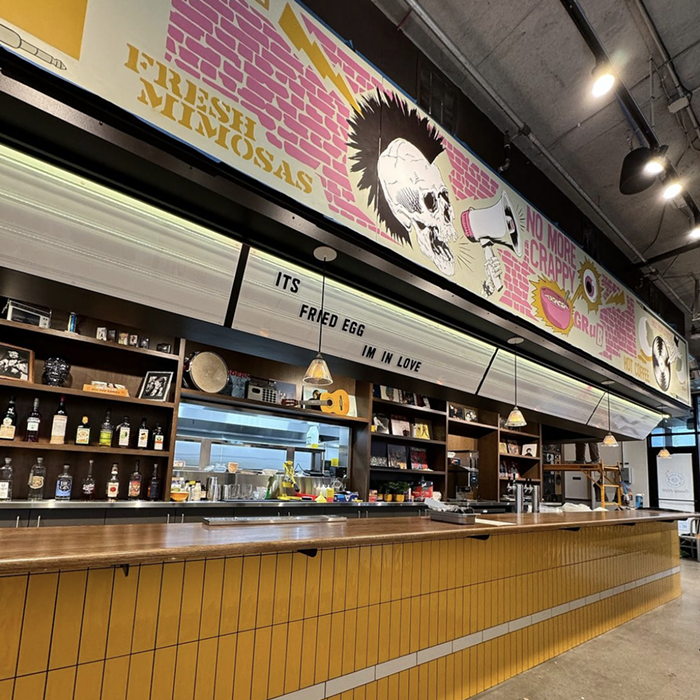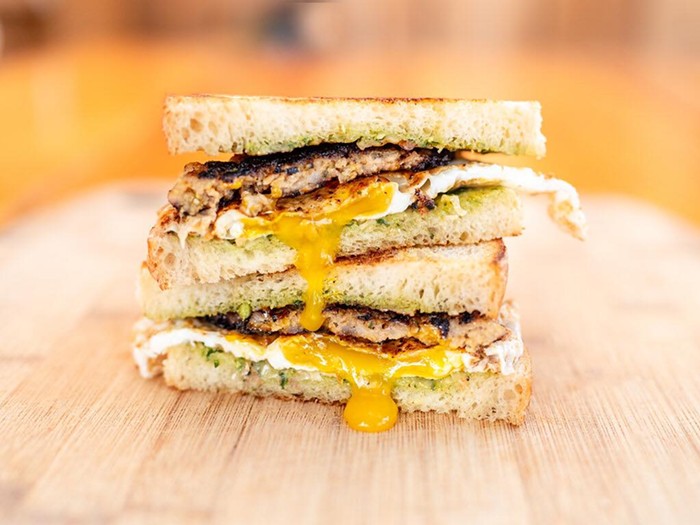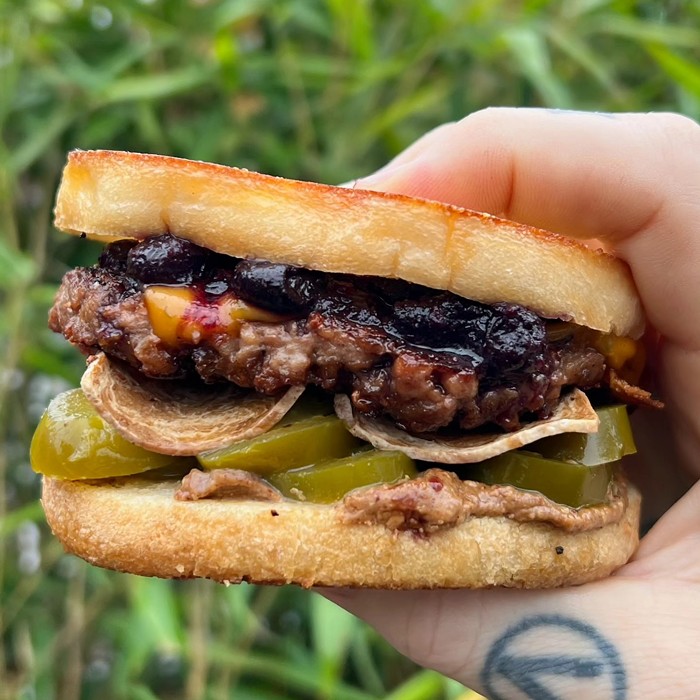A backlash has been bubbling among craft beer drinkers against one of the industry’s longtime stalwarts: the IPA. You may have read articles about how consumer sentiment has been steadily turning to other styles in recent years. Like the smell of stale beer in the morning, the IPA—a style of beer designed to deliver as much hop flavor, aroma, and bitterness as possible—may have overstayed its welcome.
Of course, this isn’t really true. IPAs are more popular than ever, and for good reason: Their extreme hoppiness can be goddamn delicious, and is exactly what a lot of beer drinkers want a lot of the time. But sadly, not everybody can get down with a good ol’ IPA.
It happened to me a few years ago. After a night of knocking back a couple of IPAs, I felt bad. Really bad, worse than I should have. Headache, sore throat, congestion—it was all there the next morning, serving as a painful reminder of the previous evening’s transgressions. I knew that it wasn’t simply a hangover; this was something else. I finally bit the bullet and decided to visit the doctor and take the allergy test that I had been avoiding. Like a swinger getting an STD test after a really good orgy, I was dreading this moment. And by the time the test finally happened, I was already resigned to the truth: I was allergic to hops and I couldn’t deny it any longer.
It sounds stupid now, but I was a little bit devastated when the test confirmed my fears. Here I was, a homebrewer, an avid beer snob, an IPA lover, and an established beer nerd, suddenly confronted with a harsh new reality. Fuck, I had 10 pounds of hops stored in my freezer.
Confronted with this unwelcome diagnosis, I buckled down to figure out what I could still homebrew and drink. Clearly IPAs were out, hoppy pale ales were out... hoppy anything was out. That much was obvious, but what else could I drink?
I knew what I had to do. I had to drink a bunch of beers for health and science. This was the kind of challenge I was born for.
IBUs and You
Beer drinkers are probably familiar with the term “international bitterness unit” (IBU), a measurement of how hoppy a beer might be. When hops are harvested, they’re analyzed to determine the percentage of alpha acid units (AAUs), a gauge of a hop’s potential bitterness. The IBU is a measurement of the AAUs isomerized or absorbed into the beer. All beers brewed with hops will typically be given an IBU rating. Some beers, like an imperial IPA, might clock in at 100 IBUs, while a hefeweizen could be around 20 to 30 IBUs. The general consensus is that anything over 100 IBUs is undetectable by the human palate, but incredibly high IBU counts have been used as a marketing tool to help drive up sales for intensely hoppy beers.
While the IBU is a good gauge of how hoppy a beer might be, the number is usually theoretical rather than practical. Brewers typically estimate how many IBUs a beer is likely to contain based on the recipe and ingredients used, rather than ponying up for an expensive laboratory test that can give an exact measurement. The bigger the brewery, the more likely that they’ve paid for the test. Despite the flaws of this particular unit of measure, IBUs are a decent tool to decide which beers the hop-averse might be able to drink.
Balance
It begs the question: Why are there hops in beer at all? The answer is balance, and the bitterness needed to create it. To make beer, the brewer extracts sugar from grain with water to make wort, unfermented beer. This wort is basically sugar water, and if it were to be fermented as is, it would taste sickly sweet and be totally unpalatable.
Beer needs another flavor to balance out the sweetness of the wort, and hops have been providing that balance for the past 1,000 years or so. When hops are boiled, they contribute bitterness, and the longer they are boiled, the more bitterness they provide until their AAUs are exhausted. Generally speaking, the more alcohol that a beer contains, the more sugar the wort contains, and therefore, more hops are needed to add balance.
Aging Beers
As a beer ages on a supermarket shelf (or in a beer nerd’s cellar), the beer goes through certain changes. One notable change is that the flavor and aroma provided by the hops will gradually fade. This is why IPAs are often designed to be consumed as fast as possible, and why other beers might be unpalatably hoppy when fresh but drinkable after some time has passed. For example, a beer like Orval begins life fairly bitter and hoppy, but it’s bottled with Brettanomyces yeast, and over time, the hops fade and the Brett takes over, completely transforming the beer.
While it is almost never a good idea to intentionally age IPAs, some people do enjoy aging hoppy beers with a malty backbone. The beer may not necessarily improve, but it will change over time, and can result in interesting flavors.
So, What to Drink?
Ultimately, only you (and maybe your doctor) can know what level of hoppiness is right for you and your lifestyle. I drank IPAs for years before developing a sensitivity. I plan on harvesting my homegrown hops this week and making a fresh hop beer as soon as I am able to. Hopefully, I will be able to drink it. A hop allergy can be a real bummer, but thank Christ you aren’t allergic to gluten, right?... Right?
TYPE: Gruit (0 IBUs)
EXAMPLE: Special Herbs, 0 IBUs, Upright Brewing, Portland, OR
A gruit is a beer that contains no hops. Hundreds of years ago, hops were a scarce commodity, and only certain regions had access to them. Therefore, brewers would use other herbs to create the necessary bitterness, such as mugwort, yarrow, and sage. The best gruits are made with souring bacteria and yeast to help dry out the malt sweetness and add an acidic kick.
TYPE: Light lager (5-10 IBUs)
EXAMPLE: Pabst Blue Ribbon (10 IBUs), Pabst Brewing Co., Milwaukie, WI
The industrial light lager beer, as ubiquitous as it is bland and refreshing, has been the choice of the hop-avoider for many years. Pabst (and other brands owned by that company) have been producing solid light lagers for decades, and Pabst was rewarded for their efforts in 2016, taking home a gold medal at The Great American Beer Festival.
TYPE: European beers (10-40 IBUs)
EXAMPLE: Weihenstephaner Hefeweissbier (14 IBUs), Weihenstephan, Germany
This is clearly a broad category, but generally speaking, European breweries are much more restrained than their American counterparts in terms of hop usage. Some European breweries have been in constant production for hundreds of years, and are much less likely to be influenced by this newfangled hop craze.
TYPE: Northeast-style IPAs (20-70 IBUs)
EXAMPLE: Juice Jr NE IPA (IBUs unknown), Great Notion Brewing, Portland, OR
The Northeast-style IPA uses a brewing technique that relies on adding hops after the boil has ended to extract flavor and aroma but not bitterness. The result is a beer that smells and tastes strongly of hops but has little to no bitterness. I have noticed that the lack of bitterness does make these beers slightly more palatable for my tastebuds, but your mileage may vary.
TYPE: Imperial-style beers (60-100 IBUs)
EXAMPLE: Nope
Basically, don’t drink imperial anything. In beer nomenclature, the term “imperial” indicates that a beer has a higher than normal alcohol content, and as stated above, high-alcohol beers need a high hopping rate to balance out. It might not be intuitive, but beers like imperial stouts are often extremely hoppy, but you might not taste, see, or smell those hops because they are covered up by the other strong flavors of the beer. Some stouts manage to get by with a low hopping rate by relying on the bitterness contributed by dark malts, but these are more of an exception than a rule.
TYPE: Lambic and gueuze (0-10 IBUs)
EXAMPLE: Tilquin Gueuze (0 IBUs), Gueuzerie Tilquin, Rebecq, Belgium
A hidden benefit of the hop plant is its ability to inhibit the bacterial growth. Belgian lambic producers utilize aged hops to deliver necessary anti-bacterial properties without adding any noticeable bitterness or hop flavor. Aged hops sit in warm storage for up to five years, and during that time the lupulin (pollen) falls out of the cones as they deteriorate. Lambics and gueuzes (blends of young and old lambics) do not need to worry about balancing the wort’s sweetness because these beers finish much drier than other styles, thanks to the wild yeast used to ferment them.


















